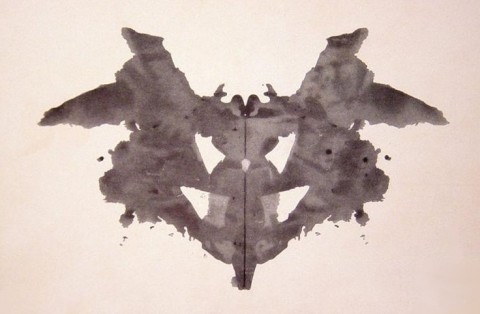
"Her­mann Rorschach's father was an art teacher, and encour­aged his son to express him­self. Whether the young Rorschach had innate artis­tic lean­ings, or had begun to lis­ten to his father more close­ly after the death of his moth­er at age 12, is uncer­tain. What is known, how­ev­er, is that Her­mann became so fas­ci­nat­ed with mak­ing pic­tures out of inkblots-a Swiss game known under the delight­ful des­ig­na­tion of Kleck­sog­ra­phy -that his school­mates gave him the nick­name of Klecks."
"Although he strug­gled to choose between art and sci­ence as a career, Rorschach, on the coun­sel of emi­nent Ger­man biol­o­gist and ardent Dar­win sup­port­er Ernst Haeck­el, chose med­i­cine, spe­cial­iz­ing in psy­chol­o­gy. Still, he nev­er aban­doned art. Even before the young Rorschach began to study psy­chol­o­gy, the med­ical pro­fes­sion had flirt­ed with imagery asso­ci­a­tion. In 1857, a Ger­man doc­tor named Justi­nus Kern­er pub­lished a book of poet­ry, with each poem inspired by an"
Hermann Rorschach combined artistic sensibility and medical training to devise the Rorschach inkblot test about a century ago. His father, an art teacher, encouraged visual expression, earning the young Rorschach the school nickname Klecks for his inkblot pictures. Rorschach struggled between art and science but, encouraged by Ernst Haeckel, chose medicine and specialized in psychology while retaining artistic practice. The inkblot test became a measure of unconscious imagery and remains embedded in cultural perception of psychology alongside Freud and Pavlov. Rorschach died young at 37. The medical profession had long used imagery association, as seen in Justinus Kerner's 1857 poetry book inspired by inkblots.
Read at Open Culture
Unable to calculate read time
Collection
[
|
...
]